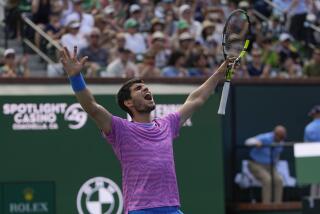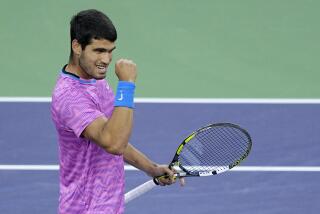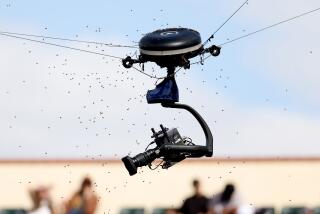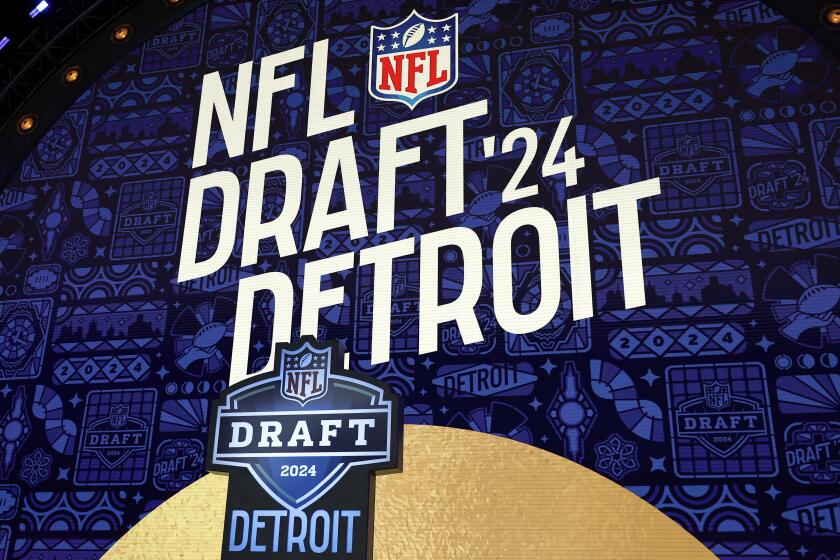Time to get back to the Tennis Garden, bigger and better than ever
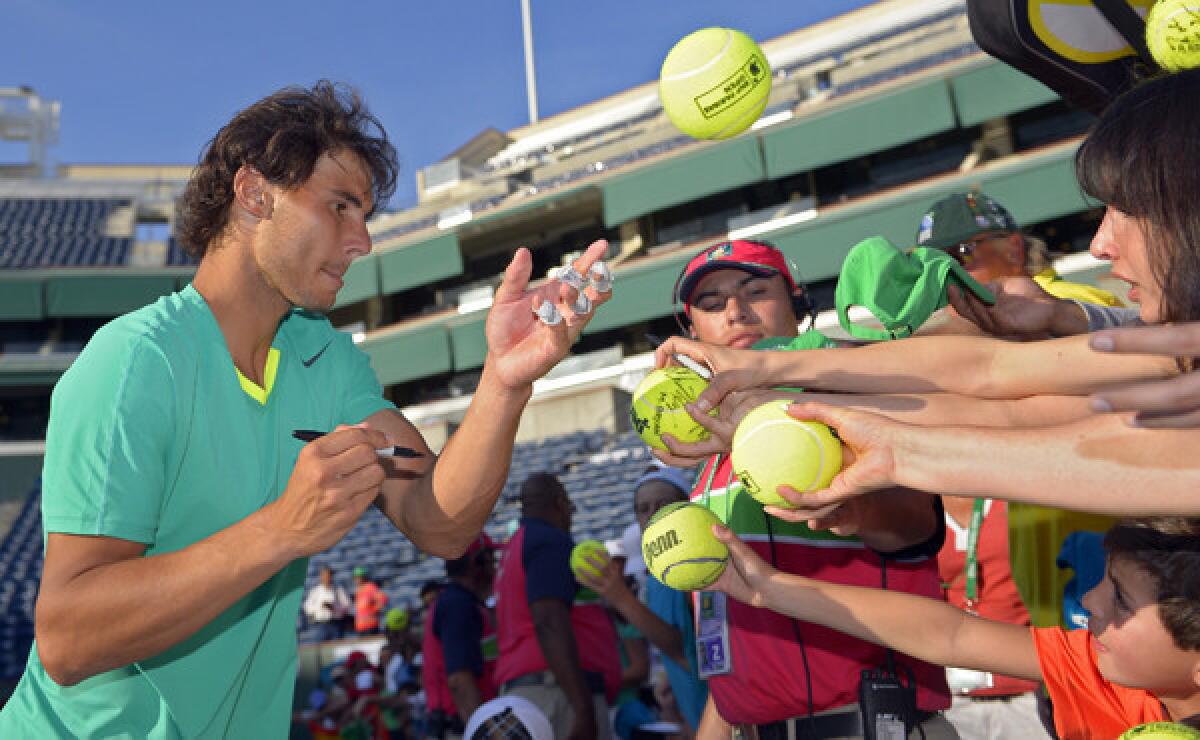
In an unusual departure from the norm, the star of this year’s BNP Paribas Open tennis tournament might not even swing a racket. The attention-getter very well may be more bricks-and-mortar than serve-and-volley.
They call the current stadium the Indian Wells Tennis Garden. It seats 16,100 in a massive enclosure that, at first look, fits in a desert setting like a bobsled fits on a beach. It is not ugly, just startling in contrast to everything else around it, which is zoned for, and conceived to be, understated and sleepy.
It resides in one of the richest cities in the country, Indian Wells. And it has been home to the fifth-largest professional tennis tournament in the world since 2000.
All of the greats from the current era have played here, and for the most part continue to do so. It is one of eight Tennis Masters 1000 Series events worldwide. The tours say you play or you pay a fine.
The event attracts fans from all over the world. This year it expects to attract enough of them to run past 400,000 in attendance. That number alone puts it somewhere alongside the four majors, if not in stature, certainly in creating buzz in the sport.
This year’s tournament is five days away from a special opening event Saturday night, and nine away from the first ball being hit in the first main-draw women’s match March 5.
So what’s new?
Well, as has always been the case with this tournament, lots. Or, as tournament director Steve Simon says, “If you are doing the same thing now that you did two years ago, you are going backward.”
The desert event, a longtime stop on the tour, has gone from a nice setting at Mission Hills in the late 1970s, to a slightly upgraded and cozier setting at La Quinta Resort, to a more plush and prestigious location at the Hyatt Grand Champions, to its current skyscraper-in-the-sand status.
And now, more. They have put extra cherries on the whipped cream, imported chrome on the Porsche. They have built a Stadium 2. It seats 8,000, has three restaurants inside, including no less than Nobu, and has given the place a new look and feel of both closure and polish. The Hawaiian villa has become an Abu Dhabi high rise.
Some will see it as overkill. Others will write big checks and just come and enjoy it.
Along with the new Stadium 2 come other bells and whistles.
•They have planted 417 palm trees, at $3,000 a tree. That’s $1.251 million, and that’s before any cost for planting and watering.
•They have nine entry gates now, up from four.
•They have added padded chairs around the first two rows of the main stadium’s lower bowl. Next up, recliners?
•They have added 1,800 parking places, bringing the total to around 10,000.
•They have increased total seating availability at all the stadium courts — nine are used for tournament play and 20 more as practice courts — to 41,485. Because of parking ordinances, only 42,000 are allowed on the grounds at one time.
•The wood in Nobu is a special teak, ordered by billionaire Larry Ellison and designed and constructed for all areas inside the restaurant by his personal boat-maker.
Then there is Ellison, the key to all this.
The man who runs Oracle and is, as tournament chief executive Ray Moore says, “a tennis fanatic who takes two weeks off from his busy schedule every year to sit in the hot sun all day and watch matches,” bought this event in December 2009 and hasn’t yet stopped spending to improve it.
The original stated price for the new stadium and other improvements was $70 million.
“We had two goals when we started,” Moore says. “One was to come in on budget and the other on time. We achieved one of those goals.”
Simon says the same thing differently.
“The $70 million bought the car, but not the tires.”
The goal that was achieved was miraculous in itself. A project scheduled to take 18 months was finished in 10 months and 10 days. At a media walk-through Monday, Moore and Simon assured all that the project was “done.” No partials, no fenced-off piles of rubble like at the 2004 Athens Olympics. Done.
“We proposed, in a meeting with Larry, phasing this in over a five-year period,” Moore says. “Larry looked at us and asked, ‘Can you do it in one year?’ We swallowed hard and said yes.”
And so, the tennis Taj Mahal has a new wing, new landscaping and lots of polished gold doorknobs. Ticket costs, always pricey, have risen at about the same level as in other years. But a grounds pass for the first nine days of the tournament gets you into every stadium on the premises, if capacity allows, and costs between $38 and $57.
The price was right for the first 8,000 people who reserved free tickets for Saturday night’s grand opening event in the new Stadium 2. That sellout crowd will see John McEnroe and three other former stars play a charity event. A highlight could be McEnroe, protesting a line call from the electronic Hawk-Eye that is on all nine match courts with his signature, “You cannot be serious!”
Suffice to say, once tennis fans get a look at this Indian Wells facility, vintage 2014, they will be saying the same thing.
More to Read
Get our high school sports newsletter
Prep Rally is devoted to the SoCal high school sports experience, bringing you scores, stories and a behind-the-scenes look at what makes prep sports so popular.
You may occasionally receive promotional content from the Los Angeles Times.
